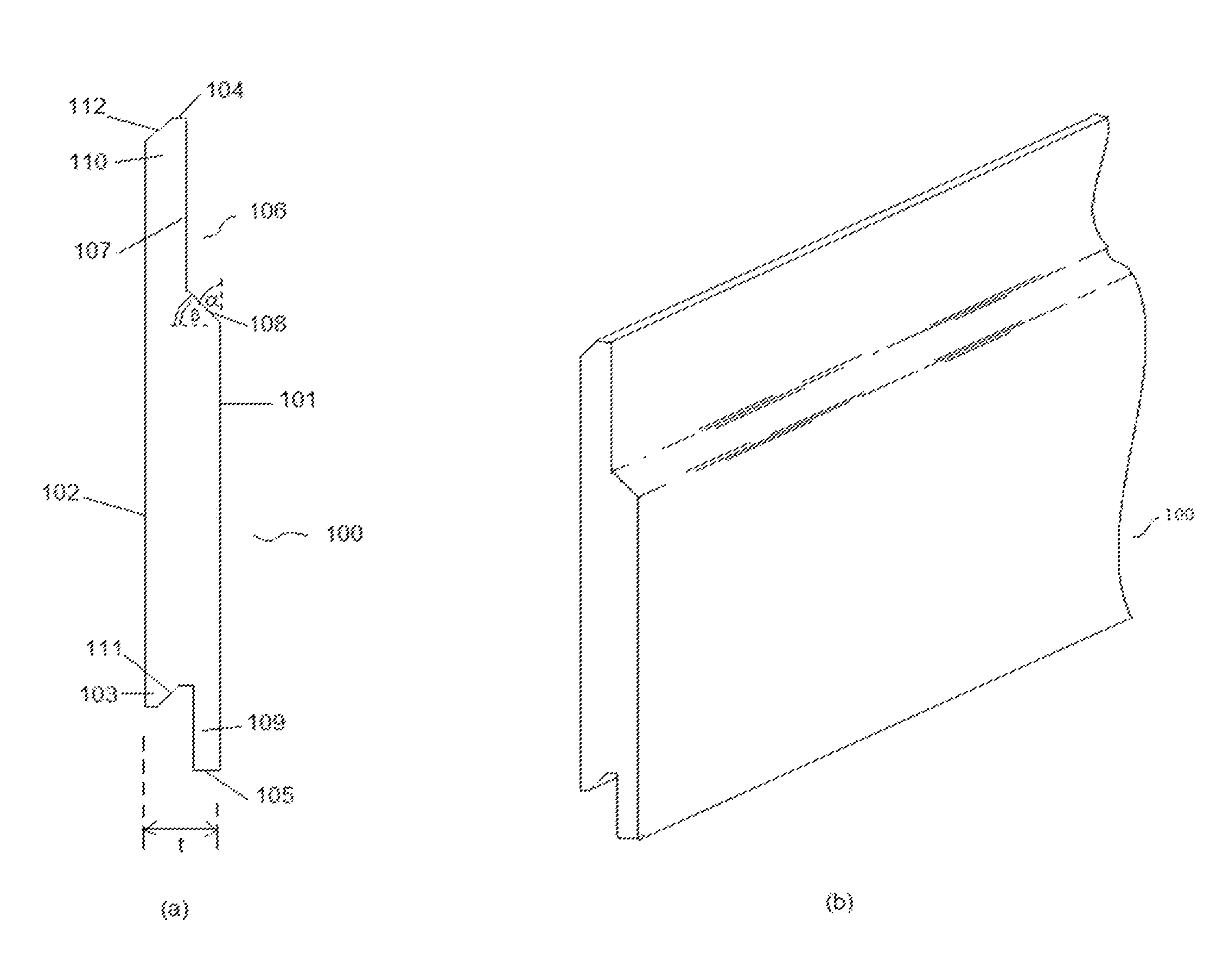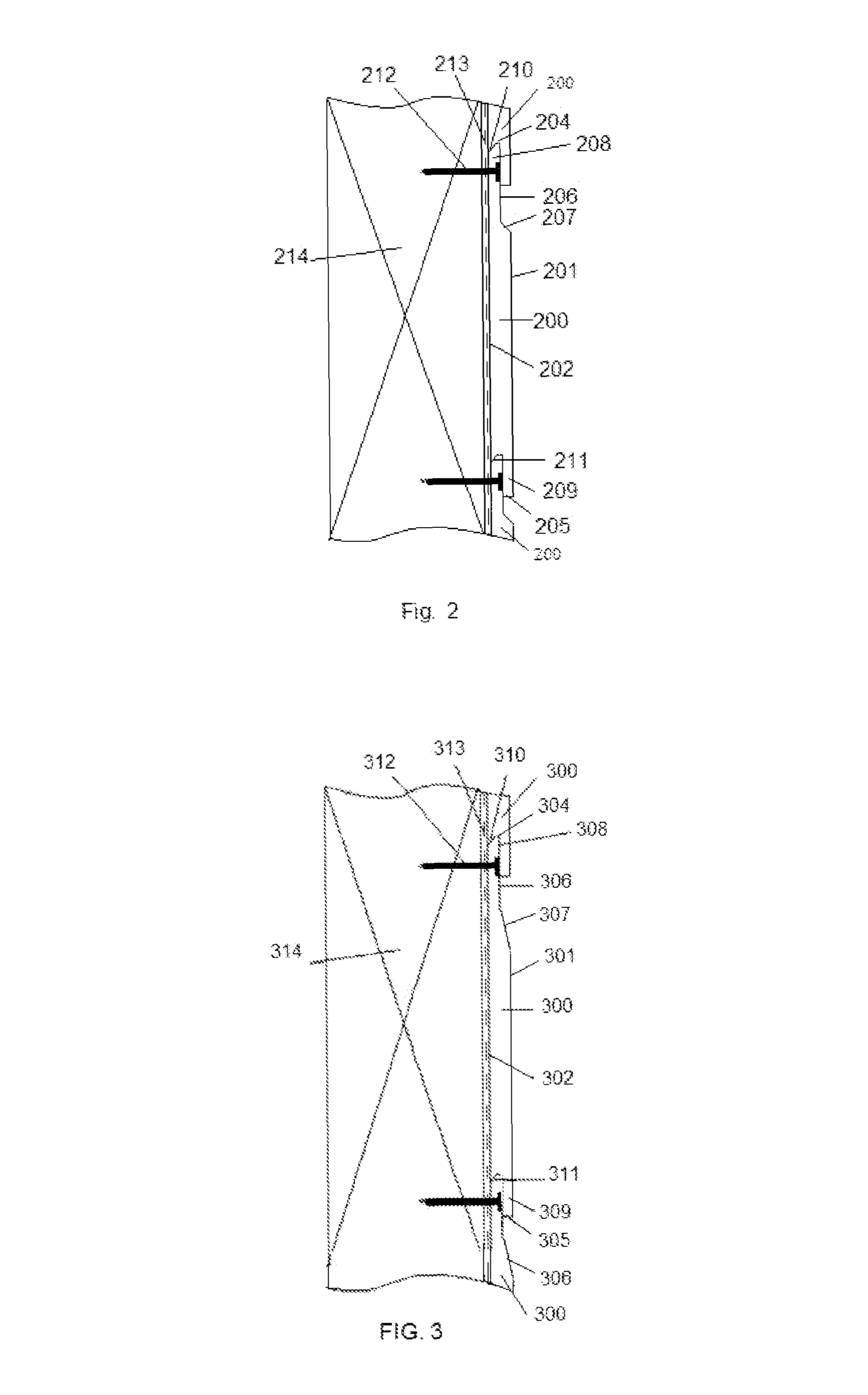Cladding element
a technology of cladding and elements, applied in the field of building elements, can solve the problems of flushing mortar joints, high skill level, high cost and time consumption of masonry construction, etc., and achieve the effect of reducing dirt and debris accumulation, improving shadow zone contrast, and reducing labor intensity
- Summary
- Abstract
- Description
- Claims
- Application Information
AI Technical Summary
Benefits of technology
Problems solved by technology
Method used
Image
Examples
Embodiment Construction
[0039]Although making and using various embodiments are discussed in detail below, it should be appreciated that the invention described provides inventive concepts that may be embodied in a variety of contexts. The embodiments discussed herein are merely illustrative of ways to make and use the described invention and do not limit the scope of the invention.
[0040]In the description which follows like parts may be marked throughout the specification and drawing with the same reference numerals, respectively. The drawing figures are not necessarily to scale and certain features may be shown exaggerated in scale or in somewhat generalized or schematic form in the interest of clarity and conciseness.
[0041]Unless the context clearly requires otherwise, throughout the description and the claims, the words “inclined surface”, “angle of inclination”, and the like are to be construed as referring to inclination with respect to the plane that extends perpendicularly from the first face. In t...
PUM
 Login to View More
Login to View More Abstract
Description
Claims
Application Information
 Login to View More
Login to View More - R&D
- Intellectual Property
- Life Sciences
- Materials
- Tech Scout
- Unparalleled Data Quality
- Higher Quality Content
- 60% Fewer Hallucinations
Browse by: Latest US Patents, China's latest patents, Technical Efficacy Thesaurus, Application Domain, Technology Topic, Popular Technical Reports.
© 2025 PatSnap. All rights reserved.Legal|Privacy policy|Modern Slavery Act Transparency Statement|Sitemap|About US| Contact US: help@patsnap.com



